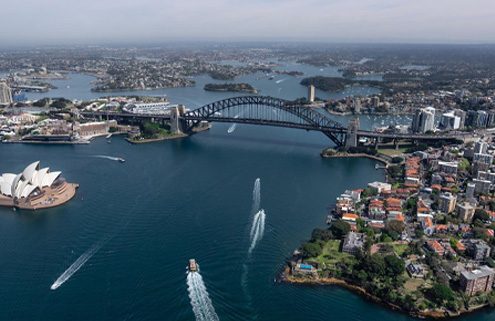
Unsung heroes: temporary migrants and international students drive Australia
Current Affairs, NewsMigration has long been a key driver of Australia’s population growth, but its economic significance goes far beyond just numbers.
According to Australian Bureau of Statistics’ national, state and territory data released in September,…

Australian Migration (Regulation & Policy) Updates – Post 1 July 2024
Migration Updates, NewsFee increases
Visa and citizenship applications have generally had fee increases of 2.8% per Consumer Price Index (CPI).
Australian Federal Police (AFP) National Police Certificate has increased from $47 to $56
Application fees for…

Australia's New Pathway to Permanent Residency for Skilled Workers
Current Affairs, NewsWho benefits with these reforms?
Anyone on a subclass 482 visa especially those currently on a STSOL occupation (subject to meeting all the other nomination and visa requirements for the subclass 186 TRT visa).
Introduction
Australia's migration…

The reopening of international travel and what it means for migration to Australia
Current Affairs, NewsWhen Australia belatedly reopened its border to the world – first with the return of skilled migration and international students, then to all remaining fully vaccinated visa holders including tourists, business travellers, and other visitors…

Global Talent Visa boost for highly skilled migrants in Australia’s economic recovery
Current Affairs, NewsIn the post-pandemic economic recovery process, Australia is competing with countries like the U.K., the U.S. and Canada for the world’s leading talent across multiple sectors considered critical to the future growth of the country. To this…

COVID-19 and its impact on Australian migration
Current Affairs, NewsIt’s fair to say the COVID-19 crisis has seriously impacted the Australian migration industry, with many applicants struggling to have their visa processed. But as the country’s post-pandemic recovery continues, there is renewed hope on…

The return of migrant workers: preparing now for Australia's post-pandemic priority
Current Affairs, NewsAmong the ongoing debate and discussion over COVID-19 policies and restrictions around the country, one major issue appears to be gathering the attention it deserves – the critical role skilled migrant workers must play in the future rebuild…

Grandfathering provisions
Current Affairs, NewsAffects 457 visa holders, that have had their occupations taken off the list, or now on the STSOL, or over 45 but under 50.
Grandfathering provisions relating to March 2018 were clarified in the 457-reforms- December 2017 newsletter.
The…

AS A NEW MIGRANT TO AUSTRALIA ARE YOU THINKING OF PURCHASING A HOME?
Current Affairs, NewsWHAT ARE THE DO’S AND DON’T’S REGARDING TAKING OUT A MORTGAGE?
Understanding how the various everyday Australian systems work is difficult and settling into a home, especially if you plan to buy, can be a daunting process.
To purchase…

TSS Sponsored Work Visa and Global Mobility
Current Affairs, NewsThe new TSS Sponsored Work Visa and challenges for Global Mobility
Australia has a new visa for highly skilled overseas sponsored workers as well as tighter criteria for the permanent sponsored visa pathway. There are no doubt higher associated…

